
Copernical Team
NASA's Ingenuity Mars helicopter completes 50th flight
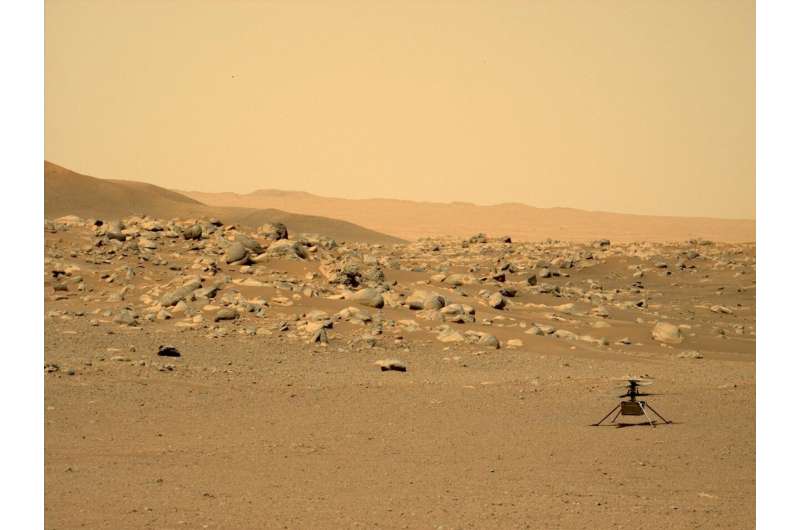
The history-making rotorcraft has recently been negotiating some of the most hazardous terrain it's encountered on the Red Planet.
NASA's Ingenuity Mars Helicopter has completed its 50th flight on Mars. The first aircraft on another world reached the half-century mark on April 13, traveling over 1,057.09 feet (322.2 meters) in 145.7 seconds.
From CERN to Jupiter: Juice embarks on its historic journey
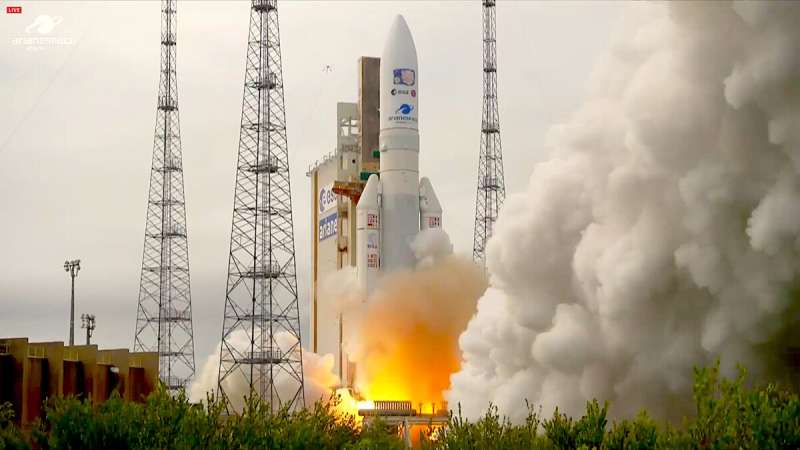
It is not only in the tunnels of CERN that we learn about the origin and composition of the universe. Look up, and space offers the most beautiful phenomena to study: black holes, dark matter, cosmic rays, etc. Studying planets, their structure and their composition teach us a lot about the formation of our own planet and might one day lead us to find a habitat and possibly life.
One of the intriguing features of the biggest planet in our galaxy, Jupiter, is the sheer number of its moons, almost one hundred in total, three of which have large oceans under a huge ice crust.
Juice launch broadcast replay
 Video:
02:22:14
Video:
02:22:14
Watch a replay of the launch broadcast for ESA’s Jupiter Icy Moons Explorer, Juice.
Juice was launched into space on an Ariane 5 from Europe’s Spaceport in French Guiana on 14 April 2023, on an eight-year cruise to Jupiter. It will make detailed observations of gas giant Jupiter and its three large ocean-bearing moons – Ganymede, Callisto and Europa.
The programme includes live segments from the Spaceport and ESA’s European Spacecraft Operations Centre (ESOC) in Darmstadt, Germany.
European spacecraft on way to Jupiter and its icy moons
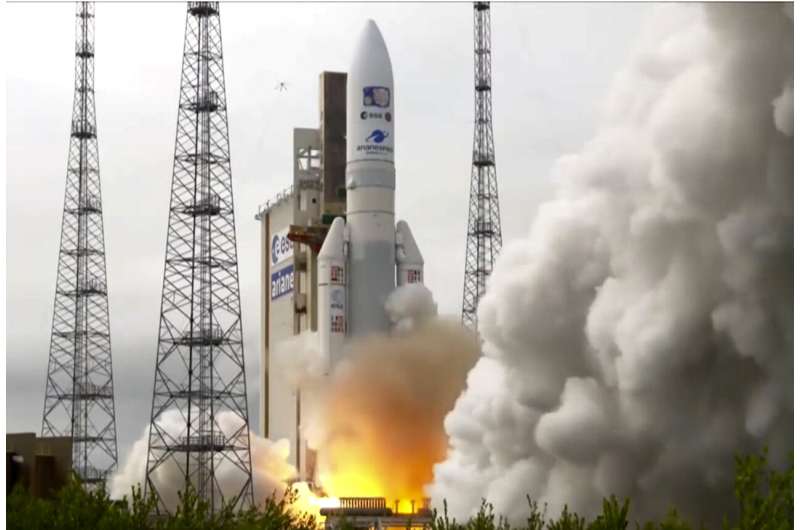
Europe's Jupiter probe launched
 The European Space Agency's JUICE mission to explore Jupiter's icy, ocean-bearing moons has blasted off, a day after the first launch attempt was called off due to the threat of lightning. More to comerana at 1214 GMT, 30 seconds earlier than Thursday's aborted effort. If successful, the uncrewed, six-tonne spacecraft will leave Earth orbit for on an eight-year journey through the Solar System aimi
The European Space Agency's JUICE mission to explore Jupiter's icy, ocean-bearing moons has blasted off, a day after the first launch attempt was called off due to the threat of lightning. More to comerana at 1214 GMT, 30 seconds earlier than Thursday's aborted effort. If successful, the uncrewed, six-tonne spacecraft will leave Earth orbit for on an eight-year journey through the Solar System aimi Juice liftoff
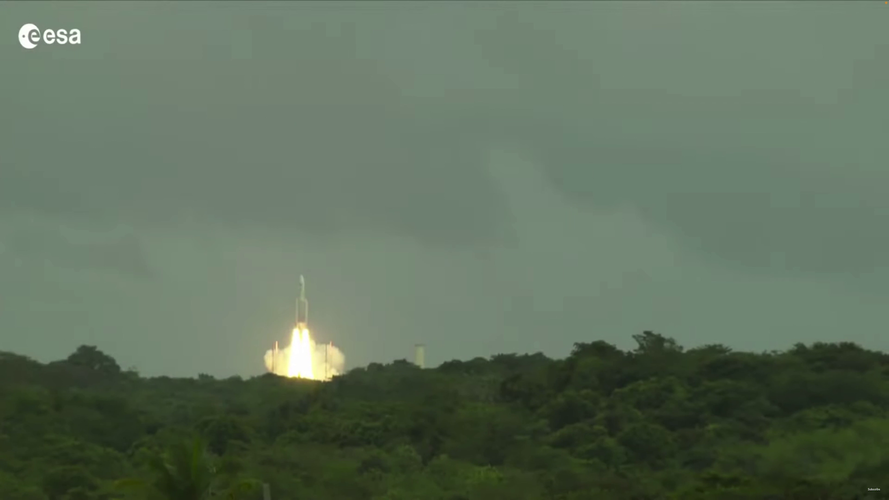 Video:
00:01:38
Video:
00:01:38
ESA’s latest interplanetary mission, Juice, lifted off on an Ariane 5 rocket from Europe’s Spaceport in French Guiana, at 14:14 CEST on 14 April 2023 to begin its eight-year journey to Jupiter, where it will study in detail the gas giant planet’s three large ocean-bearing moons: Ganymede, Callisto and Europa.
Juice – JUpiter ICy moons Explorer – is humankind’s next bold mission to the outer Solar System. This ambitious mission will characterise Ganymede, Callisto and Europa with a powerful suite of remote sensing, geophysical and in situ instruments to discover more about these compelling destinations as potential habitats for past or present
Week in images: 10-14 April 2023
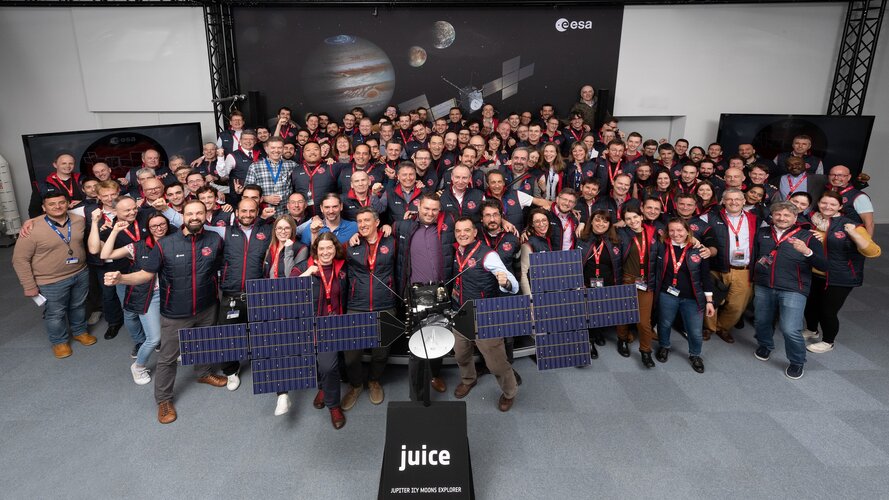
Week in images: 10-14 April 2023
Discover our week through the lens
ESA’s Juice lifts off on quest to discover secrets of Jupiter’s icy moons
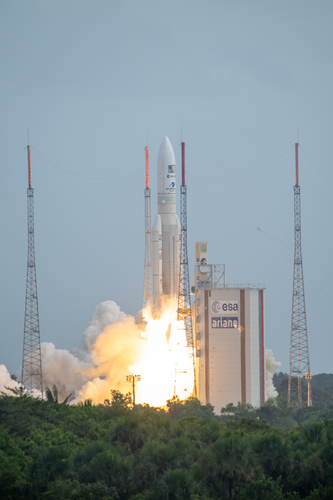
ESA’s Jupiter Icy Moons Explorer (Juice) lifted off on an Ariane 5 rocket from Europe’s Spaceport in French Guiana at 14:14 CEST on 14 April. The successful launch marks the beginning of an ambitious voyage to uncover the secrets of the ocean worlds around giant planet Jupiter.
Curiosity gets a major software upgrade
 Years in the making, a major software update that has been installed on NASA's Curiosity rover will enable the Mars robot to drive faster and reduce wear and tear on its wheels. Those are just two of about 180 changes implemented during the update, which required the team to put Curiosity's science and imaging operations on hold between April 3 and April 7.
"The flight software is essentia
Years in the making, a major software update that has been installed on NASA's Curiosity rover will enable the Mars robot to drive faster and reduce wear and tear on its wheels. Those are just two of about 180 changes implemented during the update, which required the team to put Curiosity's science and imaging operations on hold between April 3 and April 7.
"The flight software is essentia 

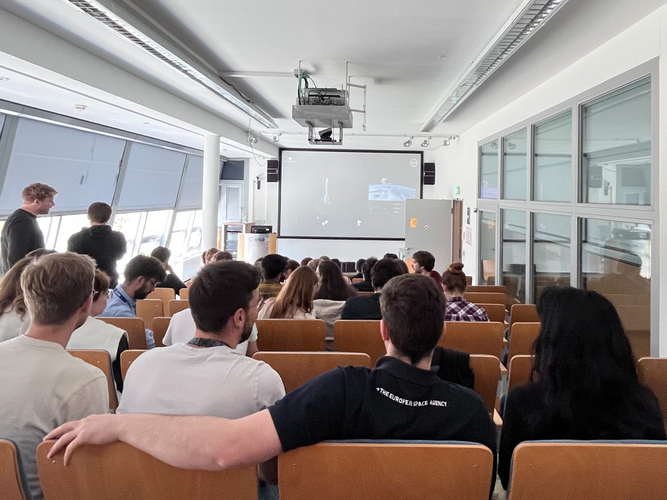 Image:
Juice for all
Image:
Juice for all